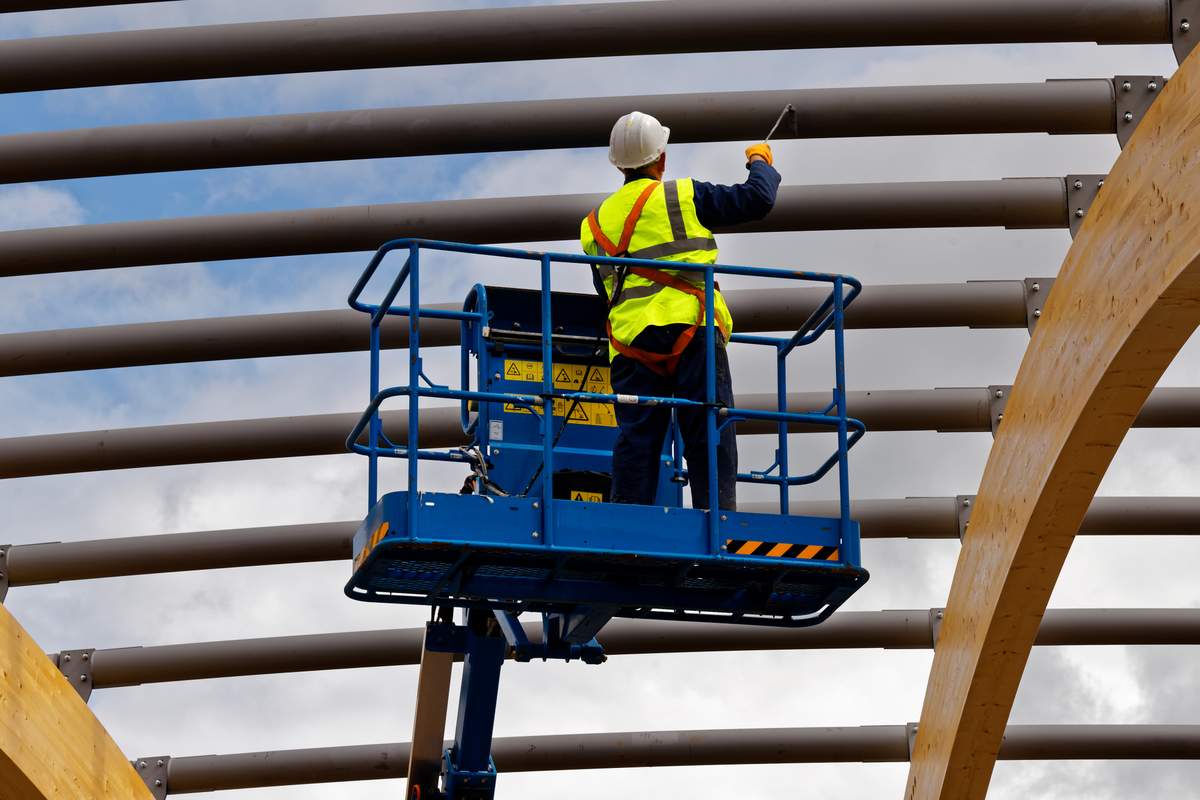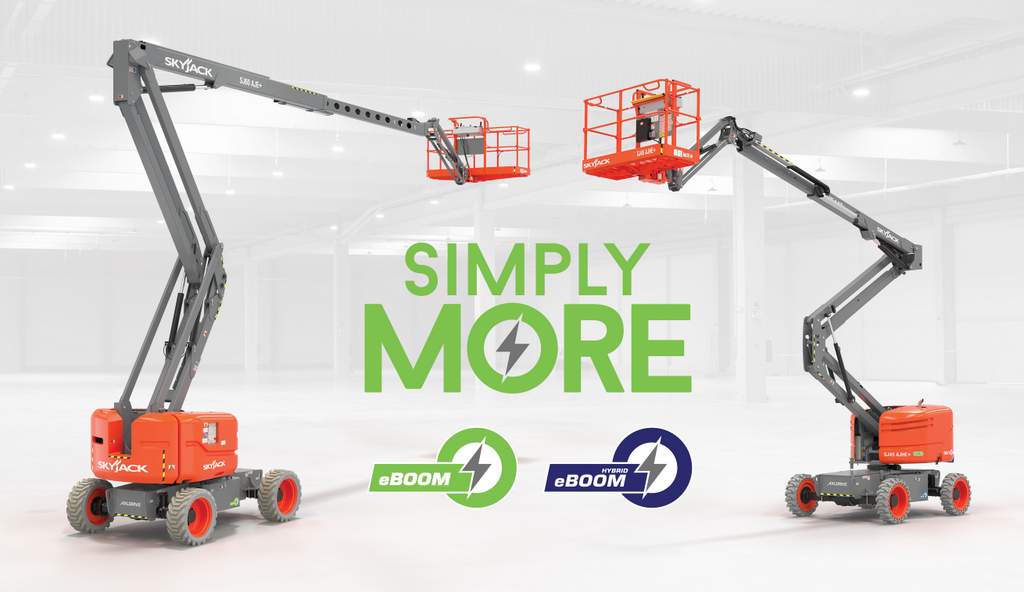Charge! Electric and Hybrid Machines Lead 2019 Launches and Tradeshows

One of the biggest trends that has emerged from this year’s abundance of early equipment launches is the promotion of both commercially available and prototype electric and hybrid machines and power systems for construction equipment. Tier 4- and Stage 5-compliant diesel engines having been stealing headlines for years, but machine makers and engine manufacturers still see potential in battery-powered, no-emissions machines.
Volvo Construction Equipment started the buzz by announcing that by mid-2020 it will begin to launch a range of electric compact excavators (EC15 to EC27) and wheel loaders (L20 to L28) for commercial operation, while stopping new diesel engine-based development of those models. That’s an amazing step, and from what we’ve gathered from the first few trade shows of the year, many other equipment and power plant makers are also pursuing battery-powered equipment and hybrid engine technology for the American marketplace.
The ARA Show in February was a hotspot for electric units. Focused on the rental equipment industry, the 2019 Anaheim show drew rental houses ready to buy new machines. There, on the show floor, attendees could find lots of electric options. At the JCB booth, they could inspect the 19C-1 IE electric mini excavator, the first of a new generation of JCB E-TEC electric products that boast no emissions.
“You will get between eight and 10 hours of operational life out of the three batteries,” explained Nick White, JCB product specialist. “A 110V supply will take about 12 hours to charge it. There will be a fast charge option coming forward in the future, this year, so you could have a standalone charging unit like a forklift charging system. Three-phase, which is 480-volt here in the U.S., and that would give you a charging time of down to two hours from empty.”

The 19C-1 IE will have an operating weight of 4,105 lbs, maximum dig depth of 8 ft, 5 in. and a maximum dump height of 8 ft, 6 in. The unit’s retractable undercarriage (and backfill blade equipped with foldable wings) allows the unit to travel through doorways for no-exhaust indoor work.
“The unit’s based on our 19C-1 1- and 2-ton next-generation excavator range, so it actually has the same DNA as those machines,” explained Nick White. “With the same undercarriage, dozer blade, dig end, operator station and canopy, there are virtually no changes at all from the diesel engine machine. The only thing we’ve done, quite simply, is to remove the internal combustion engine, albeit a clean diesel engine, and put in a number of batteries and a magnetic electric motor to power the machine.”
At ARA, Takeuchi displayed its e210 electric mini excavator — a partnership with Green Machine Equipment — a Buffalo-based manufacturer of lithium-ion powered drive systems that replace traditional diesel engines. Takeuchi released an e240 electric excavator at CONEXPO-CON/AGG in 2016. The new e210 is a small and nimble variant with a maximum dig depth of 5 ft, 9 in., a dump height of 6 ft, 11.5 in. and an operating weight of 2,370 lbs. The e210 charges from a standard 220V/50A or 110V/20A outlet, operates and charges at temperatures down to -4 C, charges from empty to full in about two hours and the battery is rated for 2,000 charge cycles.
Going smaller, compact tool carriers and trenchers got the electric treatment at The ARA Show too. We should note that Triple E Equipment has provide a battery-powered compact tool carrier, the Sherpa 100ECO, for years now, but Toro was also showcasing a concept battery-powered Dingo compact utility loader at the rental expo. The e-Dingo is built on the Dingo 323 wheeled frame — 23-hp gas engine, 10.8 gpm of hydraulic power, independent four-wheel drive system — but will feature an electric engine and a two-pump hydraulic system. It will feature mark-free tires, ideal for indoor use, where Toro anticipates there will be a big market. Ditch Witch was also displaying a prototype for an electric trencher at the show. Based off its C12X trencher, the unit has a run time of four hours, charge time of six hours and dig depth of 24 in. Ditch Witch was quick to note that this unit was still very much in concept phase.

Batteries over engines was also on full display with the mobile elevating work platforms manufacturers. Electric scissor lifts are not new, but Genie announced that lithium-ion batteries are now an available option on its GS slab scissors. This new battery option is tailored specifically for work on construction sites and is suitable for cold weather performance. Genie lithium-ion batteries are designed to perform throughout the machine’s first rental life.
“Electric scissors of today are typically powered by lead-acid batteries, which are comprised of a number of lead plates in a bath of acid,” said Mike Flanagan, Genie product manager at Terex AWP, in the press release. “The new Genie lithium-ion battery option is made up of a Lithium Iron Phosphate mixture [commonly referred to as LFP], a proven battery chemistry well suited for the performance required in demanding rental applications and jobsite environments. To further enhance performance of the new Genie lithium-ion battery, we have incorporated battery heaters into the design of this new option to enable the battery to provide reliable, consistent operation in temperatures down to -20 degrees F.”
All of this alternative power news feels like a lead up to the biggest and most prestigious trade show in construction — bauma — which only happens every three years in Munich, Germany, including this April 8-14. Engine manufacturers have already been teasing new technologies for the giant trade fair, which draws some 600,000 attendees. Perkins just announced it will reveal hybrid-electric, hybrid-mechanical and hybrid-hydraulic power technologies at bauma, complementing its existing 0.5- to 18-liter range of diesel engines.

“For construction machines, it’s not sufficient to simply carry over hybrid or electric technologies from other sectors such as truck, automobiles or marine,” noted Matt Coleman, product director at Perkins, in a press release. “The duty cycles, operating conditions and packaging constraints for off-highway machines drive the need for specific configurations that are highly customized to the individual application. Through our close technical collaboration with our OEMs and using a huge amount of real field data, we can develop solutions which are truly relevant to the construction sector.”
Electric and hybrid engine options have been floating around the construction industry for years. John Deere recently announced its 644K and 944K hybrid wheel loaders (not compact units) have collectively logged more than 1 million operating hours in the field. John Deere was among the first to introduce electric drive technology in off-highway equipment, as it produced the 644K hybrid loader in 2013 and the 944K hybrid loader in 2015. While hurdles such as higher upfront costs and concerns about battery longevity and charging time still exist, manufacturers see big potential. Now it’s up to the contractors and rental houses to start buying and experimenting with these units.




